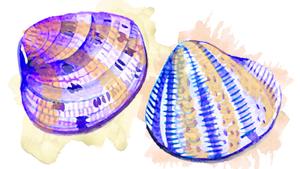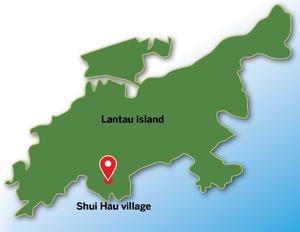While government and private corporations have joined hands to raise awareness about conservation of rare species of animals in HK, it’s the non-professional citizen scientists who are at the forefront of this movement. Mike Lau reports.

Animal conservation brings to mind intrepid adventurers or huge charities spearheading massive projects like elephant conservation in Zimbabwe, orangutan orphanages in Borneo, or tagging whale sharks in the Philippines. However, there is now a growing trend of governments and NGOs working with non-professionals on projects that help encourage the public to actively get involved in environmental matters affecting their communities and future generations.
One such project that has gained a lot of traction over the past year is a scheme to preserve the biodiversity in a popular coastal tourist spot on Lantau island. With support from the local government’s Environment and Conservation Fund (ECF) and the Environmental Campaign Committee, World Wildlife Fund (WWF) Hong Kong has been involving local residents and small-business owners. The focus of their work is the world-famous Shui Hau beach, a major tourist attraction that’s home to Lantau’s largest stretch of sandflat. For decades, hordes of day-trippers have roamed the rippled black-sand beach, fishing for clams to take home or cook on-site. However, as locals and tourists have noticed, the size and quality of clams have been deteriorating in recent years.
For decades, hordes of day-trippers have roamed the world-famous Shui Hau, fishing for clams to take home or cook on-site. However, as locals and tourists have noticed, the size and quality of clams have been deteriorating in recent years
The falling population and diminishing variety of clam species — in particular, the Asiatic hard clam — can have dramatic and devastating effects on the local ecosystem. These filter feeders play a key role in cleaning the waterways for all creatures that live or use the beach. Additionally, they are a key component in the food chain for fish and birds native to the mudflat. Overharvesting of clams has also affected Shui Hau beach’s other famous shellfish, the horseshoe crab. With visitors constantly walking on and raking up the sand and the seagrass bed for clams, the natural habitats of species like the horseshoe crab is under threat.
ALSO READ: Lam: HK committed to protection of oceans
“Effective protection and management is required to ensure that Shui Hau can continue to support important diversity of marine life as well as sustain an important community activity and the economic benefits of that activity,” says Laurence McCook, head of oceans conservation at WWF-HK.
Code of conduct
To address this issue, the ECF’s HK$1.5 million (US$193,034) Sustainable Shui Hau project was started in 2018. Supported by WWF and academics, the project largely depends on the efforts of the local “citizen scientists.”
The first step was to release a code of conduct for visitors — essentially a kit on how to forage for clams in a responsible way, the first of its kind in Hong Kong. The eight key rules include releasing immature shellfish back into the water and using less destructive equipment when harvesting the mollusks. A field guide informs diggers about the presence of all the important wildlife on the shore so they can develop a better appreciation for the delicate nature of the local ecosystem. Finally, a “clam gauge” helps visitors identify the maturity of the clams they’re digging. Observations recorded by the diggers can then be used to monitor the health of the clams.
Since its launch in June 2019, the code of conduct has been warmly received by locals and visitors to the bay. McCook says, “Most visitors (are) supportive, learning of the code of conduct and related conservation messages either from the local grocery stores’ promotions or from the public signage.”
Effective protection and management is required to ensure that Shui Hau can continue to support important diversity of marine life as well as sustain an important community activity and the economic benefits of that activity.
Laurence McCook, Head of oceans conservation at WWF-HK
Chi, owner of Shui Hau Inn Store, says, “I was born and grew up in Shui Hau and have witnessed it changing from a bay that no one knew (about) or understood to a hub of conservation work. I am glad to see more tourists start to discover Shui Hau Wan.”
He is optimistic about the sustainability of Shui Hau’s clams and other wildlife. “After WWF launched the clam-digging code of conduct and clam gauges, visitors showed a lot of interest in these measures,” he says. “The collaboration with WWF has successfully aroused public awareness on conservation. Now, visitors are not only concerned with this harvest, they also want to learn about the marine ecology of the area and contribute to conserving it.”
The authors of the code of conduct agree that only through raising awareness and treating clam diggers as stakeholders in the well-being of indigenous species can the sustainability of clams in Shui Hau be achieved.
“Involvement of the public and local communities generates support and ownership of the conservation initiatives, providing better compliance with protection measures,” says McCook. “Participation in citizen science, such as the survey program at Shui Hau, not only engages and educates participants, but provides cost-effective support for labor-intensive ecological surveys and educational benefits,” he added.
Following on from the success of this venture, six other coastal sites in Hong Kong could also become official designated areas of marine conservation by 2025, covering 10 percent of the SAR’s waters. However, Cindy Lam Ka-sin, from the Department of Ocean Science at the Hong Kong University of Science and Technology, believes there is much work left to be done.
“Bivalves and many other marine invertebrates are not protected under the Wild Animal Protection Ordinance (Cap. 170), and indeed the human disturbance to coastal habitats such as Tai O, Pak Nai and Shui Hau is quite high,” she says. “The government should review the need of strengthening the management on human coastal activities.” Lam adds that “before any statutory management could be introduced in Hong Kong, public education is crucial to raise awareness.”
 Shui Hau village on Hong Kong’s Lantau island has become a hub of community effort to support diversity of marine life.
Shui Hau village on Hong Kong’s Lantau island has become a hub of community effort to support diversity of marine life.
Changing attitudes
For generations, pangolin scales were seen as an ingredient of traditional medicines to supposedly help treat swelling, improve blood circulation and induce lactation for new mothers. In recent years, pangolins have also turned up as a delicacy on the dining tables of China’s wealthy.
The biggest markets of pangolin meat are in China and Vietnam. Last May, a man in Hong Kong was sentenced to 20 months in prison after being caught with 48 kg of African pangolin scales en route to Macao.
One million pangolins have been sold to China and Vietnam in the last 10 years. Because of this mass poaching, and the fact that pangolin mothers tend to only have one baby at a time, their population has dwindled, with the WWF classing all eight species of the animal as “vulnerable” to “critically endangered.” To combat possible extinction, the Convention on International Trade in Endangered Species decreed in 2017 that it would be illegal to trade pangolins unless a non-commercial grant was issued.
Despite its protected status, many pangolins continue to be bought and sold. Governments and conservationists are adopting greater measures to protect the species, including high-profile seizures and burning of smuggled scales to deter poaching. But perhaps the greatest tool in pangolin conservation is raising the animal’s public profile so that this shy and weird-looking creature gets the same recognition as other highly poached animals, like elephants and rhinos. As part of a drive to change public thinking and habits, a Hong Kong government spokesperson said: “The Agriculture, Fisheries and Conservation Department is making a continuous effort in educating the general public on endangered-species protection and trade regulation through various channels and activities, such as educational talks and exhibitions, TV announcements of public interest, distribution of leaflets at various border control points as well as Facebook posts.”
Fighting animal trafficking is a highly complicated undertaking. Governments and conservationists have found that there is no silver bullet and opt instead for a broad range of solutions
The Central People’s Government in Beijing also declared last August that traditional Chinese medicine (TCM) products containing pangolin will no longer feature in its national insurance program. It is also considering raising the protection status of the animal to class I, which would see the complete ban of all 60-plus pangolin TCM products that are currently approved for usage.
READ MORE: Wildlife trafficking: A global scourge
Fighting animal trafficking is a highly complicated undertaking. Governments and conservationists have found that there is no silver bullet and opt instead for a broad range of solutions, from cutting off supplies to freezing bank accounts of offenders. Last year, a novel approach involving the participation of young people was introduced in an effort to stay one step ahead of traffickers. With 1 million species threatened with extinction, according to the latest UN Report on sustainable development, it is little wonder that environmental activists are becoming younger and younger.
A partnership between the University of Hong Kong, the US Consulate General in Hong Kong and Macao, NGOs such as WWF and companies like Swire Pacific has led to a competition to find new ways to combat trafficking.
Keeping Wildlife in the Wild challenge invited teams of university students from Hong Kong and Macao to come up with innovative ways to not just stop illegal poaching and trading of the world’s most endangered species but also to promote more public awareness about environmental issues and generate new ideas for marine-life preservation.
In addition to assisting a great cause, the competition, which ended in November, could be a springboard to a future career in wildlife conservation as participants were given the opportunity to pitch their ideas to industry experts. Proposals in the final round included a TCM promotion and mobile apps to identify marine wildlife and promote sustainable alternatives to shark-fin consumption at wedding banquets. The three winning teams were awarded overseas exchange and training opportunities, internships and other prizes.
Alan Chan, co-founder of the Environmental Management and Technology team, which placed third in the challenge, says that he and his young teammates were mainly motivated by concerns about the cruelty of shark-finning and the effects of overfishing. “The practice of taking shark fins and then discarding the shark bodies back (into) the ocean is immoral,” Chan said, adding that a decrease in the shark population would also bring about disastrous effects on the whole marine ecosystem. He is grateful for the opportunities created by the experience of researching and collaborating on the project. “It was a lengthy process, but it helped us build stronger bonds with each other,” he says, adding, “In the coming days, WWF will provide training and technical support to help us make the system work.”


